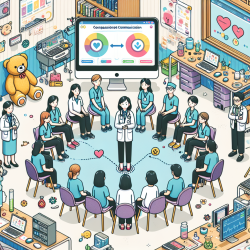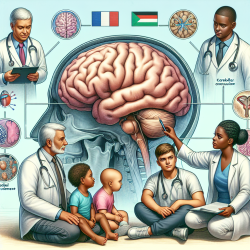As practitioners dedicated to creating optimal outcomes for children, it's imperative to continuously evolve our methods based on the latest research. The book "Head Injury Recovery in Real Life" by Larry Schutz and Michael Schutz, reviewed in the Canadian Journal of Speech-Language Pathology and Audiology, offers profound insights that can enhance our understanding and approach to traumatic brain injury (TBI) rehabilitation. This blog aims to distill key findings from the book and suggest actionable steps to integrate these insights into practice.
Key Insights from the Research
The book presents cases of patients who suffered severe traumatic brain injuries and made significant recoveries. The authors analyzed over 1,600 working-age TBI patients, highlighting the exceptional recoveries of a select few. These cases provide valuable lessons on the factors that contribute to successful rehabilitation.
1. Importance of Real-World Context
One of the critical insights from the book is the disparity between clinic-based training and real-world application. The authors emphasize that clinic-based training often fails to prepare individuals for the complexities of daily life post-injury. This highlights the necessity of incorporating real-world scenarios into rehabilitation programs.
2. Developing Patient Insight
Another key point is the importance of developing patients' insight into their deficits. The book discusses how understanding and acknowledging their limitations can significantly impact recovery. This insight allows patients to develop strategies to compensate for their deficits, thereby improving their daily functioning.
3. Factors of Successful Recovery
The book also identifies several factors that contribute to successful recovery, including:
- Strong social support networks
- Personal motivation and resilience
- Access to comprehensive rehabilitation services
- Tailored interventions that address individual needs
Actionable Steps for Practitioners
Based on these insights, here are some practical steps that practitioners can take to enhance their rehabilitation programs:
1. Integrate Real-World Scenarios
Design therapy sessions that mimic real-world challenges. For example, create exercises that involve navigating social situations, managing daily tasks, or dealing with unexpected changes. This approach helps patients apply their skills in practical settings, thereby improving their overall adaptability.
2. Foster Self-Awareness
Encourage patients to reflect on their progress and understand their limitations. Use tools such as journals, self-assessment questionnaires, and regular feedback sessions to help patients gain insight into their deficits. This self-awareness is crucial for developing effective coping strategies.
3. Leverage Social Support
Incorporate family members and friends into the rehabilitation process. Educate them about the patient's condition and ways they can provide support. Creating a strong support network can significantly enhance the patient's motivation and overall recovery.
4. Tailor Interventions
Recognize that each patient is unique and requires personalized interventions. Conduct thorough assessments to identify individual needs and design customized therapy plans. This personalized approach ensures that each patient receives the most effective treatment.
Encouraging Further Research
While the book provides valuable insights, it's essential to continue exploring and expanding our knowledge. Encourage practitioners to engage in further research and stay updated with the latest findings in TBI rehabilitation. Participating in professional development opportunities, attending conferences, and collaborating with peers can contribute to a deeper understanding and improved practices.
Conclusion
The book "Head Injury Recovery in Real Life" offers a wealth of knowledge that can significantly enhance our approach to TBI rehabilitation. By integrating real-world scenarios, fostering self-awareness, leveraging social support, and tailoring interventions, practitioners can create better outcomes for their patients. To read the original research paper, please follow this link: Head Injury Recovery in Real Life.










